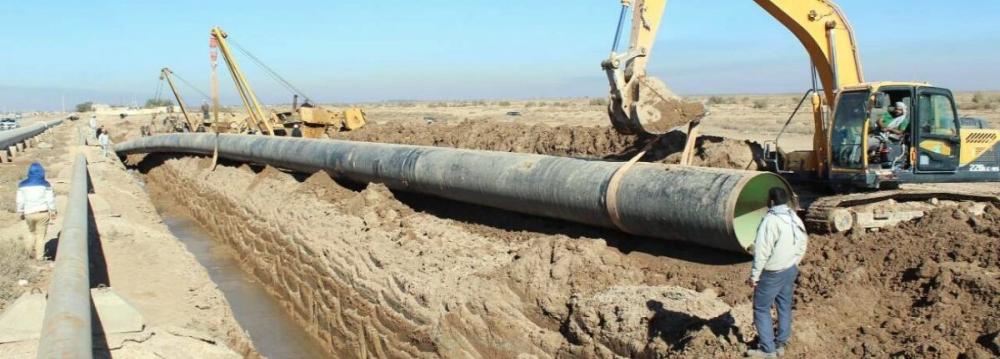The project to supply water to 2,800 villages in Sistan-Baluchestan Province is underway with an investment of $175 million, the managing director of the provincial Water and Wastewater Company said.
“The project includes more than 8,000 kilometers of pipe laying, construction of water storage tanks with a capacity of 240,000 cubic meters and 180 pumping stations,” Alireza Qasemi was also quoted as saying by the Energy Ministry’s news service.
Currently, 72% of the rural population in Sistan-Baluchestan have access to drinking water.
“Upon the completion of the project, a population of over 780,000 people in the rural areas of the underprivileged province will be provided with potable water,” he added.
The vast and arid province in southeast Iran has long been troubled with water shortage. Perpetual drought has been accompanied by a dangerous decline in rainfall, worsening the water crisis in the province.
According to the official, the Oman Sea, as the only source of sustainable water in its proximity, has the potential to meet a part of the drinking water needs of the province.
Seawater Transfer
The executive operations to transfer 200 million cubic meters of desalinated water per year from the Sea of Oman to Sistan-Baluchestan are underway.
In the first phase set for completion in 2024, desalinated water will be delivered to the counties of Sistan-Baluchestan and then the pipeline will be extended to South Khorasan and Khorasan Razavi provinces. The project includes a transmission line stretching over 1,530 km.
The transmission line to Sistan-Baluchestan Province is 820 km long and its construction is estimated to cost $1.66 billion.
The daily water deficit in Zahedan, capital of Sistan-Baluchestan, is about 100,000 cubic meters.
Water supply to the city, with a population of 900,000 people, is as low as 150,000 cubic meters per day, which is adequate for only 300,000 residents.
Chabahar is another parched region that needs at least 354,000 cubic meters of water per day.
Transferring water without harming the environment is an obligation of the government. To find the most cost-effective mode, multifaceted studies on the area’s ecological and environmental conditions, as well as the environmental impact of water projects, have been carried out.
When the project becomes fully operational, an estimated 700 million cubic meters of freshwater will be supplied annually to Sistan-Baluchestan, South Khorasan and Khorasan Razavi provinces for drinking and industrial use.
Deep Wells and Chah-Nimeh
The drilling of deep wells is another solution to help alleviate water tension in Sistan-Baluchestan.
The first phase of a desalination plant in Nimruz County was launched late summer to help supply drinking water to the urban and rural areas of the region from the third deep water well drilled in the province.
The desalination plant has started operating with a capacity of 1,000 cubic meters per day.
With the completion of the second phase by the end of the current Iranian year (March 2023), the plant’s capacity will reach 2,500 cubic meters per day.
The first two deep water wells drilled at a depth of 3,000 meters in the region are an artesian well and water from such wells flow without pumping.
The drilling of seven more deep water wells is on the agenda of the provincial authority for supplying drinking water to cities and villages of the underdeveloped province.
Other than digging deep wells, water supply to several cities of the southeastern province will be made possible through other initiatives, including collecting water from Chah-Nimeh reservoirs.
Chah-Nimeh reservoirs are three natural and big cavities in the southern Sistan Plain, 50 kilometers from Zabol. Surplus water from Hirmand River flows into them via a canal. The reservoirs, with a capacity of 700 million cubic meters, constitute one-seventh of Hamoun Wetland.


